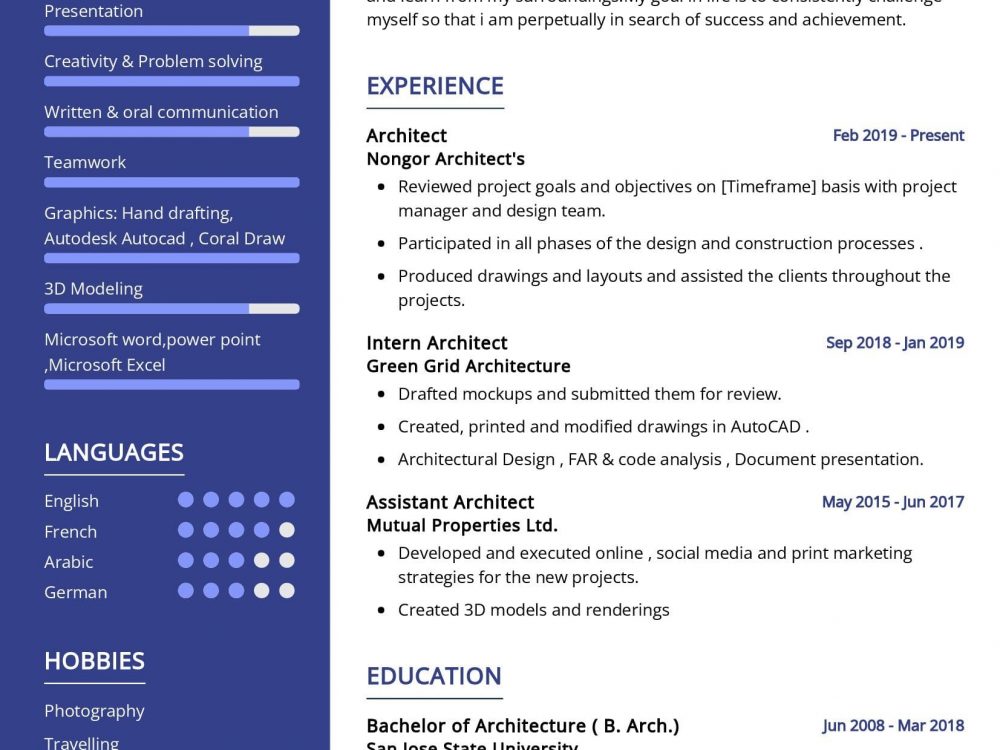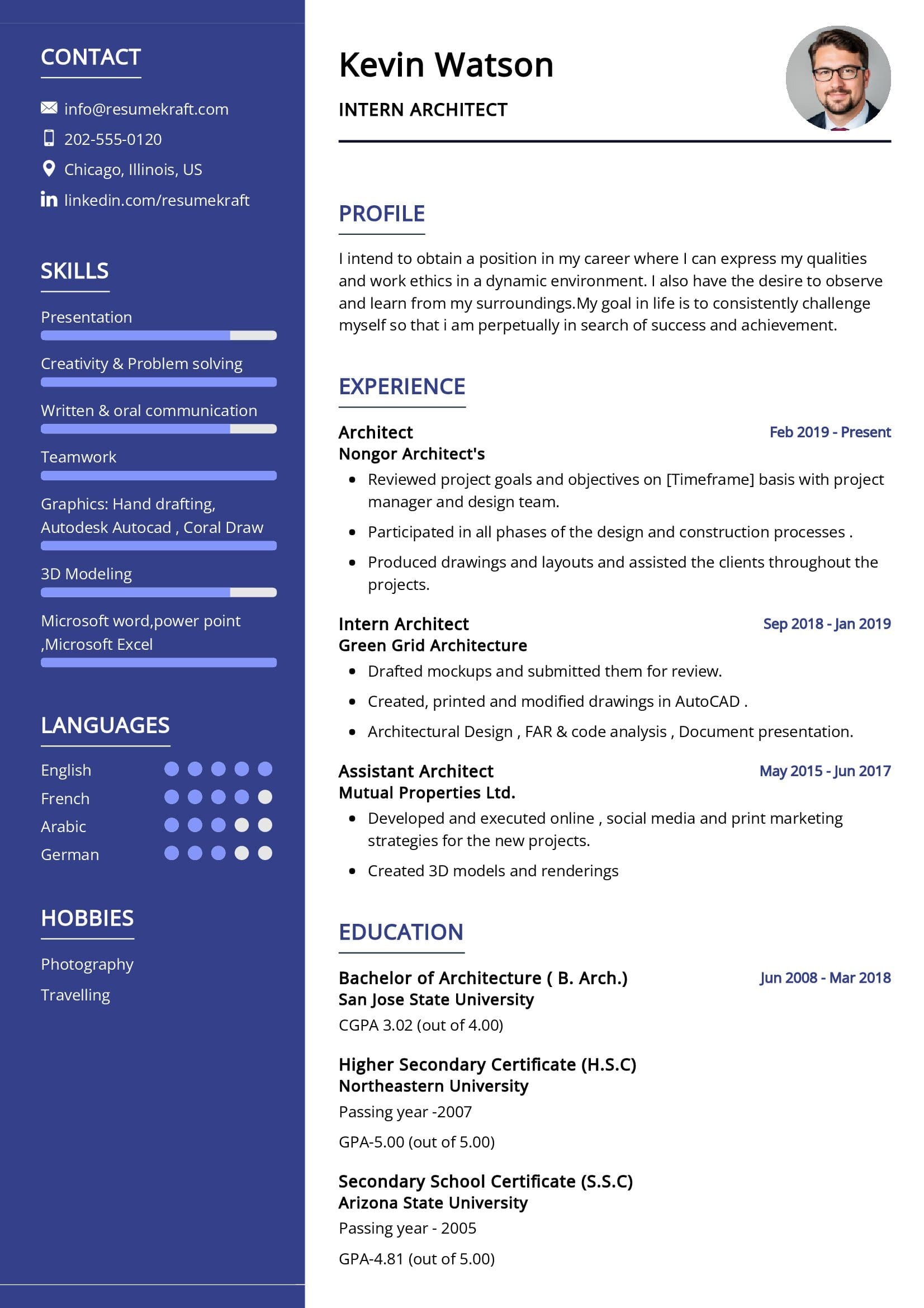Exploring the Role of an Architect
As the world of design and construction continues to evolve, the role of an Architect stands as a cornerstone in shaping our physical environment. Architects are not just builders; they are visionaries, artists, and problem-solvers who craft spaces that inspire and serve a purpose. In this comprehensive guide, we will delve deeper into the multifaceted role of an Architect, a profession that demands a blend of creativity, technical expertise, and a deep understanding of human needs.
Architect Job Requirements
Embarking on a journey as an Architect is both a challenging and rewarding endeavor. To thrive in this profession, one must meet certain stringent requirements that lay the foundation for success. Let’s explore the prerequisites that aspiring Architects need to fulfill:
- A Bachelor’s or Master’s degree in Architecture, showcasing a strong foundation in the field.
- Profound knowledge of architectural principles, including design theory, construction techniques, and building codes.
- Experience in architectural design, a journey where you have honed your skills and embraced innovative approaches.
- Strong communication skills, both verbal and written, essential for conveying your design ideas to clients and construction teams.
- Proficiency in architectural software and tools, such as AutoCAD, SketchUp, and Revit.
- An eye for detail and a passion for aesthetics, as architecture is as much about artistry as it is about functionality.
- Ability to work under pressure and manage multiple projects simultaneously, a trait developed through years of practice in the field.
Additionally, pursuing architectural licensure is a significant milestone in your career, showcasing your commitment to excellence and adherence to industry standards.
Responsibilities of an Architect
The role of an Architect is a tapestry of diverse responsibilities, each contributing to the creation of functional, aesthetically pleasing, and sustainable spaces. Let’s unravel the core responsibilities that define this profession:
- Conceptualizing and designing architectural projects, considering both form and function.
- Collaborating with clients to understand their needs, preferences, and budget constraints, and translating these into design concepts.
- Creating detailed architectural plans, blueprints, and 3D models that serve as the blueprint for construction.
- Working closely with engineers, contractors, and other professionals to ensure that designs meet structural and safety requirements.
- Overseeing the construction process, making site visits, and providing guidance to ensure that the project aligns with the design intent.
- Adhering to sustainability principles, incorporating eco-friendly and energy-efficient features into designs.
- Staying updated with the latest trends in architecture, materials, and technology to bring innovation to your projects.
Each responsibility comes with its own set of challenges and rewards, shaping you into a skilled Architect who can bring dreams to life through design.
Architect Resume Writing Tips
When crafting your Architect resume, it’s essential to present your qualifications and experiences effectively. Your resume should be a reflection of your journey, your design philosophy, and your commitment to creating exceptional spaces. Here are some tips to help you create a compelling resume:
- Showcase your portfolio: Include images or descriptions of your most significant projects, highlighting your design prowess.
- Highlight your collaboration skills: Architects often work in teams, so emphasize your ability to work effectively with others.
- Quantify your achievements: Use metrics to demonstrate the impact of your designs, such as energy savings, cost efficiency, or client satisfaction ratings.
- Include relevant certifications: If you have certifications in sustainable design, LEED accreditation, or other specialized areas, make sure to list them.
- Personalize your resume: Tailor your resume for specific job applications, emphasizing experiences and skills relevant to the position.
Your resume is not just a document; it’s your portfolio and your introduction to potential employers. Make it count.
Architect Resume Summary Examples
Your resume summary is your opportunity to make a strong first impression. It should be a concise yet powerful snapshot of your career, highlighting your design philosophy and achievements. Here are some examples to inspire you:
- “Experienced Architect with a passion for sustainable design, dedicated to creating environmentally conscious and aesthetically pleasing spaces.”
- “Innovative Architect with a track record of transforming complex client requirements into elegant, functional designs.”
- “Collaborative Architect with expertise in cultural and historical preservation, committed to preserving the past while designing for the future.”
Your resume summary should spark curiosity and invite employers to learn more about your architectural journey.
Create a Strong Experience Section for Your Architect Resume
Your experience section is the core of your resume, where you narrate your career story through the projects you’ve undertaken and the impact you’ve made. Here are some examples to guide you:
- “Led the design team for a sustainable office building project, achieving LEED Platinum certification and reducing energy consumption by 30%.”
- “Designed a modern residential complex that seamlessly blends with its natural surroundings, earning accolades for its environmental harmony.”
- “Restored a historic landmark, preserving its architectural heritage while updating it for contemporary use, garnering recognition from preservation societies.”
Each project you’ve worked on is a testament to your skills and creativity, so tell your story with pride.
Educational Background for Your Architect Resume
Your educational journey is the foundation of your career as an Architect. It’s where you acquired the knowledge and skills that shape your designs. Here’s how you can list your educational milestones:
- Master of Architecture, XYZ University, a comprehensive program that deepened my understanding of architectural theory and practice, 2018.
- Bachelor of Science in Architectural Studies, ABC University, a solid foundation that ignited my passion for design, 2014.
- LEED Accredited Professional, showcasing my commitment to sustainable design principles, 2019.
Your education is not just a qualification; it’s a reflection of your dedication to mastering the art and science of architecture.
Architect Skills for Your Resume
Your skill set as an Architect is a toolbox filled with a diverse range of tools that you’ve honed over the years. It’s a showcase of your abilities, both creative and technical. Let’s list down the essential skills that an Architect should possess:
Creative Skills:
- Design thinking, the ability to conceptualize and translate ideas into tangible architectural plans.
- Attention to detail, the meticulous approach to ensuring every element of a design align
s with the overall vision.
- Artistic flair, the talent for creating visually appealing and inspiring spaces.
- Problem-solving abilities, the skill to find innovative solutions to design challenges.
- Client interaction, the capacity to understand and address the unique needs and preferences of each client.
Technical Skills:
- Proficiency in architectural software, including AutoCAD, SketchUp, and Revit, essential for creating detailed plans and models.
- Knowledge of building codes and regulations, ensuring designs comply with safety and legal requirements.
- Project management, the ability to oversee multiple aspects of a project, from design to construction.
- Construction knowledge, an understanding of construction materials, techniques, and processes.
- Budget management, the acumen to work within budget constraints while delivering exceptional designs.
Each skill in your toolbox contributes to your ability to bring architectural visions to life.
Common Mistakes to Avoid When Writing an Architect Resume
As you craft your Architect resume, it’s crucial to steer clear of common pitfalls that can hinder your chances of landing your dream job. Here are some mistakes to avoid:
- Using generic templates: Avoid using one-size-fits-all resume templates that don’t highlight your unique qualities as an Architect.
- Focusing on job duties, not achievements: Instead of listing routine tasks, emphasize your accomplishments and the impact of your designs.
- Ignoring the cover letter: Don’t underestimate the power of a well-written cover letter to introduce yourself and your passion for architecture.
- Overloading with technical jargon: While technical knowledge is vital, avoid overwhelming your resume with complex terms that may be unfamiliar to non-architects.
- Failing to proofread: Typos and errors can detract from your professionalism, so take the time to proofread your resume carefully.
Avoiding these mistakes will help you create a resume that showcases your true potential as an Architect.
Key Takeaways for Your Architect Resume
As we conclude this in-depth exploration of the Architect profession and resume crafting, let’s recap the key points to remember:
- Highlight your design philosophy and portfolio, showcasing your unique approach to architecture.
- Quantify your achievements to demonstrate the impact of your designs.
- Personalize your resume for each job application, tailoring it to match the specific requirements of the position.
- Emphasize your commitment to sustainability and innovation in architecture.
Now, you’re well-equipped to create a resume that not only reflects your architectural journey but also captures the attention of potential employers. Your resume is your canvas, and your designs are your masterpieces. Best of luck on your architectural endeavors!
Finally, feel free to utilize resources like AI Resume Builder, Resume Design, Resume Samples, Resume Examples, Resume Skills, Resume Help, Resume Synonyms, and Job Responsibilities to create a standout application and prepare for the Architect job interview.


